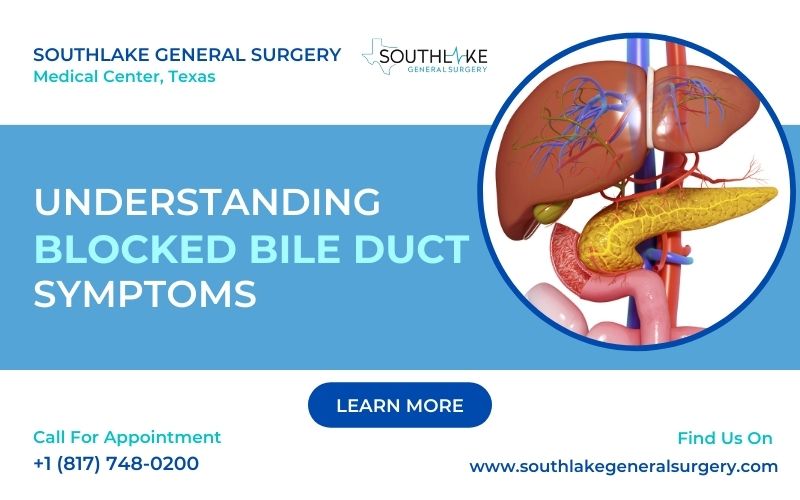Blocked bile duct symptoms can vary depending on the underlying cause of the blockage. Common symptoms may include abdominal pain, jaundice (yellowing of the skin and eyes), dark urine, pale stools, itching, nausea, and vomiting.
In some cases, a blocked bile duct can lead to complications such as infection or inflammation of the bile duct. It is critical to consult a doctor for an accurate diagnosis and treatment plan if you are dealing with any of these symptoms.
Bile duct obstruction also referred to as biliary obstruction, occurs when there is a blockage or narrowing in the bile ducts, which are responsible for transporting bile from the liver to the gallbladder and small intestine for digestion.
Symptoms and potential complications arise when this flow of bile is hindered, with gallstones being a common culprit. Other causes include bile duct cancer, chronic liver disease, and pancreatic cancer.
This blog will cover symptoms, medical attention, causes, diagnostics, treatments, risks, complications, and post-treatment life related to bile duct obstructions, along with answering common questions on the topic.
Key Highlights
- Biliary obstruction is a blockage in the bile ducts, which can cause symptoms such as abdominal pain, jaundice, and dark-colored urine.
- The most common cause of biliary obstruction is gallstones, which can be treated through procedures such as endoscopic retrograde cholangiopancreatography (ERCP) and gallbladder removal surgery.
- Other causes of biliary obstruction include bile duct cancer, chronic liver disease, and pancreatic cancer.
- Diagnostic approaches for identifying bile duct blockages include ultrasound, CT scan, MRCP, and blood tests.
- Treatment options for blocked bile ducts include minimally invasive procedures, gallbladder removal surgery, and managing symptoms through diet and lifestyle adjustments.
- Untreated bile duct blockages can lead to severe complications, such as liver failure and chronic liver disease.
Recognizing the Signs of a Blocked Bile Duct
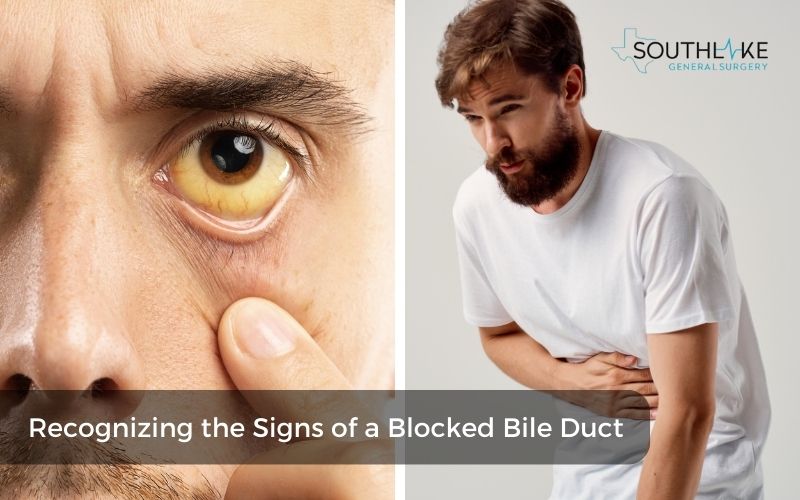
Recognizing the signs of a blocked bile duct can be crucial for timely intervention. Symptoms may include:
- abdominal pain
- jaundice
- dark urine
- pale-colored stools
- nausea and vomiting
- itching
If you experience these symptoms, especially in combination, it’s essential to consult a healthcare provider promptly to investigate the possibility of a bile duct obstruction. Early detection can help address the issue effectively and prevent potential complications.
Common Symptoms of Bile Duct Obstructions
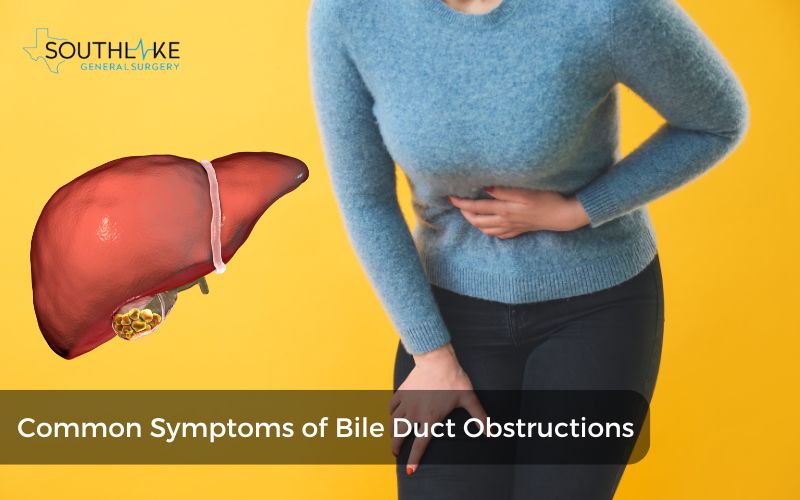
Abdominal pain, jaundice, and nausea are common symptoms of bile duct obstructions. These blockages disrupt the flow of bile, leading to the accumulation of waste products like bilirubin, causing jaundice.
Abdominal pain can result from the backup of digestive juices due to the blockage. Nausea may occur as a result of the impaired digestion process.
If you experience these symptoms, consult a healthcare provider promptly for proper evaluation and treatment.
When to Seek Medical Attention for Suspected Bile Duct Issues
Persistent symptoms like abdominal pain, jaundice, or unexplained weight loss warrant prompt medical evaluation for suspected bile duct issues. If you experience severe pain, fever, or persistent vomiting, seek immediate medical attention. Additionally, symptoms such as dark urine or pale stools should not be ignored.
Early detection and intervention are crucial in managing potential bile duct obstructions to prevent complications and ensure timely treatment. Consulting a healthcare provider promptly can help in diagnosing and addressing any underlying concerns efficiently.
Causes Behind Blocked Bile Ducts
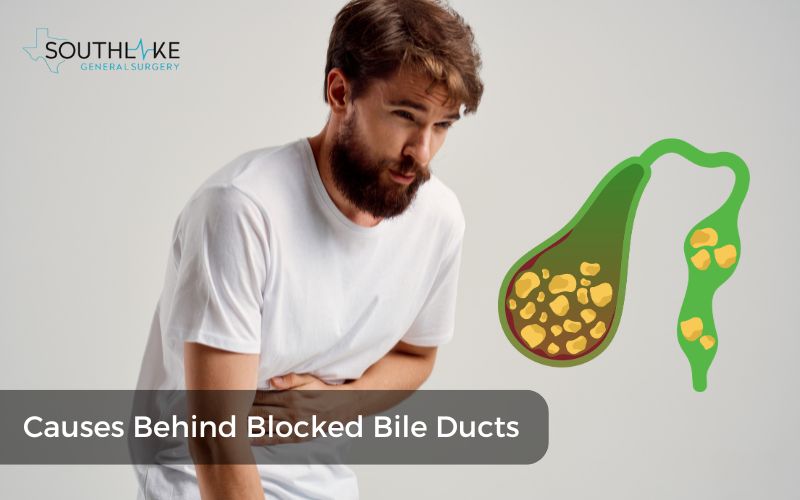
Bile duct obstructions can result from various underlying conditions. Gallstones are the primary cause, blocking the flow of bile from the liver to the small intestine.
Other culprits include bile duct cancer, biliary cirrhosis, and choledochal cysts. Inflammation, tumors, or strictures may also lead to blockages in the bile ducts.
Identifying these causes is crucial for determining the most appropriate treatment and managing the risk factors associated with bile duct blockages.
Gallstones: The Primary Culprits
Gallstones are the main cause of blocked bile ducts. These solid particles form in the gallbladder and can move into the bile ducts, leading to obstruction. The presence of gallstones can trigger symptoms such as abdominal pain, jaundice, and nausea.
Gallstones pose a significant risk for bile duct blockages, requiring timely medical intervention to prevent complications. Understanding the role of gallstones in bile duct obstructions is crucial for effective diagnosis and treatment.
Other Medical Conditions Leading to Bile Duct Obstructions
Primary sclerosing cholangitis, biliary strictures, and choledochal cysts are other medical conditions that can result in bile duct obstructions.
- Bile duct inflammation and scarring, caused by primary sclerosing cholangitis, eventually obstruct the bile flow.
- Biliary strictures include narrowing of the ducts, restricting the flow of bile.
- Choledochal cysts are structural abnormalities that can impede proper bile drainage.
These conditions require prompt medical attention to prevent complications and ensure proper treatment.
Diagnostic Approaches for Identifying Bile Duct Blockages
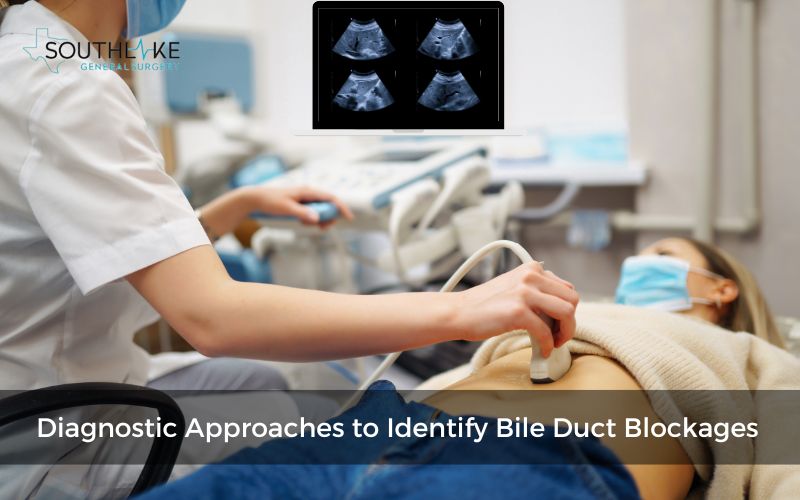
Imaging tests play a crucial role in diagnosing bile duct issues, with CT scans and ultrasounds offering detailed views of the bile ducts, liver, and surrounding structures. Blood tests provide valuable insights into liver function, bilirubin levels, and potential infections.
For more advanced evaluations, MRCP and ERCP are employed to visualize the bile ducts using sound waves and endoscopic techniques. These diagnostic approaches help healthcare providers pinpoint the location and nature of blockages for accurate treatment planning.
Imaging Tests Used in Diagnosing Bile Duct Issues
Imaging tests play a crucial role in diagnosing bile duct issues. Techniques like ultrasound, CT scans, and MRCP provide detailed images of the bile ducts, aiding in identifying blockages, strictures, or other abnormalities.
These non-invasive procedures help healthcare providers visualize internal structures, such as the liver and bile ducts, without the need for surgery. By utilizing sound waves, magnetic fields, or contrast agents, these imaging tests provide valuable insights into the health of the bile ducts.
Blood Tests and What They Reveal
Blood tests play a crucial role in diagnosing bile duct issues. Elevated levels of liver enzymes, such as alkaline phosphatase and bilirubin, indicate a possible blockage. Additionally, high levels of amylase and lipase may suggest associated pancreatitis.
These tests help healthcare providers assess liver function, identify the underlying cause of obstruction, and determine the overall severity of the condition. Blood tests provide valuable insights into the patient’s health status, guiding further diagnostic and treatment decisions.
Advanced Diagnostic Tools: MRCP and ERCP
MRCP and ERCP are advanced diagnostic tools used for assessing bile duct issues. MRCP, magnetic resonance cholangiopancreatography, employs magnetic fields and radio waves to generate detailed images of the bile duct system.
ERCP, endoscopic retrograde cholangiopancreatography, combines endoscopy and fluoroscopy to diagnose and treat conditions in the bile ducts. These procedures aid healthcare providers in accurately identifying blockages or abnormalities within the bile ducts, enabling prompt and targeted treatment.
Treatment Options for Blocked Bile Ducts
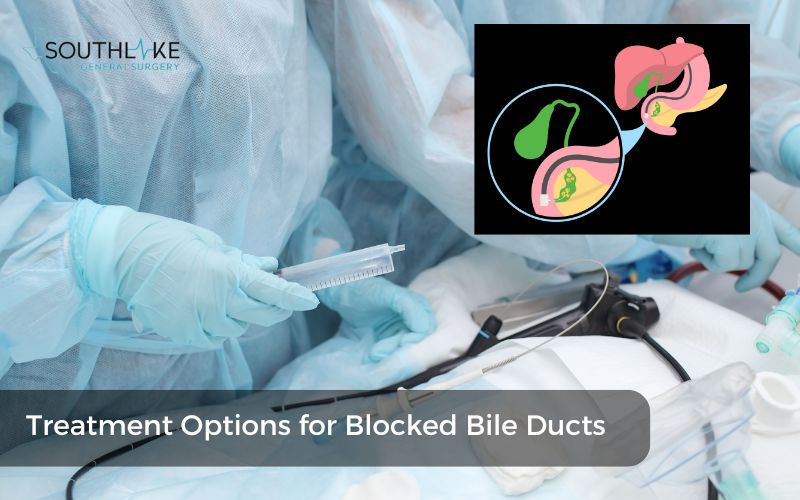
Minimally invasive procedures, such as endoscopic retrograde cholangiopancreatography (ERCP) and bile duct stent placement, offer immediate relief for blocked bile ducts.
In more severe cases, gallbladder removal surgery, known as cholecystectomy, may be necessary to resolve the issue permanently. Treatment focuses on restoring the normal flow of bile and alleviating symptoms like jaundice and abdominal pain.
Consult a healthcare provider promptly to discuss the most suitable intervention based on individual circumstances.
Minimally Invasive Procedures for Immediate Relief
Minimally invasive procedures offer immediate relief for blocked bile duct symptoms. These procedures, such as endoscopic retrograde cholangiopancreatography (ERCP) and stent placement, can effectively alleviate bile duct obstructions with reduced recovery times and minimal side effects.
By using advanced techniques like sound waves or endoscopes, healthcare providers can swiftly address blockages without the need for extensive surgery. Seek expert care promptly to explore these efficient solutions for quick symptom relief and improved bile duct function.
Gallbladder Removal Surgery: When It’s Needed
Gallbladder removal surgery, also known as cholecystectomy, becomes necessary when gallstones cause recurrent pain, inflammation, or infection.
If blockage of the bile duct by gallstones leads to complications like pancreatitis or cholecystitis, surgery may be the recommended course of action.
In cases of gallbladder cancer or severe infections in the gallbladder, removal is often a crucial treatment step to prevent further health issues. Surgical intervention is typically advised by healthcare providers after a thorough evaluation of the patient’s condition.
Managing Symptoms and Preventing Future Blockages
A healthcare provider may recommend lifestyle adjustments and regular monitoring to manage symptoms and prevent future blockages. Following dietary guidelines to reduce fat intake can alleviate symptoms. Additionally, staying hydrated and maintaining a healthy weight can aid in preventing blockages.
It’s crucial to attend follow-up appointments to track progress and address any potential concerns promptly. Understanding the importance of ongoing care and making necessary lifestyle changes are key steps in symptom management and reducing the risk of future bile duct obstructions.
Understanding the Risks and Complications
When dealing with blocked bile duct symptoms, it’s paramount to grasp the associated risks and potential complications. Untreated bile duct blockages can swiftly lead to severe infections, liver failure, or even pancreatic complications. Long-term implications may include chronic liver disease or bile duct cancer.
Early detection and intervention are crucial to mitigate these risks and prevent further health deterioration. Understanding these risks underscores the importance of prompt medical attention and proactive management of blocked bile duct issues.
Immediate Health Risks of Untreated Bile Duct Blockages
If left untreated, bile duct blockages pose immediate health risks that can escalate rapidly. Without timely intervention, complications such as liver damage, severe infections, and even liver failure may arise, leading to life-threatening situations.
Ignoring symptoms like jaundice, abdominal pain, and persistent nausea could exacerbate the underlying issues, potentially resulting in irreversible damage to vital organs.
Seeking prompt medical attention for suspected bile duct blockages is crucial to prevent these immediate health risks from escalating.
Long-Term Complications and How to Avoid Them
Long-term complications of untreated bile duct blockages may include chronic liver disease, liver failure, or bile duct cancer. To mitigate these risks, regular monitoring by a healthcare provider is crucial.
Lifestyle adjustments, such as maintaining a healthy diet and avoiding excessive alcohol consumption, can also play a significant role in prevention.
Early detection and appropriate management of underlying causes, like gallstones or liver disease, are key in averting severe long-term complications. Regular follow-up care and adherence to medical advice are essential for preventing future issues.
Life After Treatment: Recovery and Management
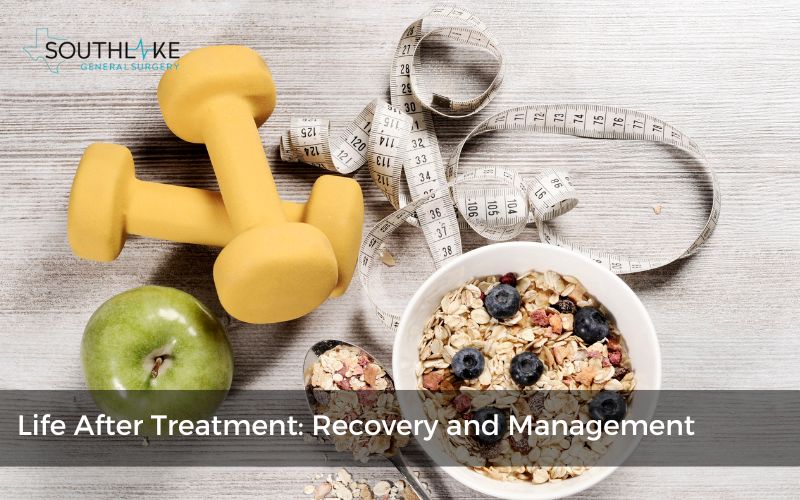
After treatment for a blocked bile duct, it’s crucial to stay healthy. Patients benefit from diet changes and exercise for recovery. Follow-up care is vital to watch for symptom returns or issues. Knowing how to manage after treatment prevents future problems.
Working closely with doctors helps transition post-treatment life smoothly, focusing on staying healthy. This collaboration reduces risks and promotes overall well-being.
Diet and Lifestyle Adjustments Post-Treatment
After treatment for blocked bile duct symptoms, adopting a healthy diet and lifestyle is crucial for recovery.
- Focus on consuming low-fat, high-fiber foods to aid digestion and prevent complications.
- Increase water intake to support liver function and bile production.
- Regular physical activity can promote overall well-being and aid in maintaining a healthy weight.
Consult with your healthcare provider for personalized recommendations based on your specific condition and treatment outcome.
Follow-up Care and Monitoring for Recurrence
It’s crucial to prioritize follow-up care post-treatment for blocked bile ducts to monitor any potential recurrence.
- Regular check-ups and monitoring by healthcare providers can detect early signs of complications.
- Stay alert for any return of symptoms such as abdominal pain, jaundice, or nausea.
- Discuss any concerns promptly with your healthcare provider to ensure timely intervention if needed.
- Engage in recommended lifestyle modifications and adhere to dietary changes to support long-term management and reduce the risk of recurrence.
Outlook
The outlook for individuals with blocked bile ducts is generally positive. With timely intervention and appropriate management, many people can experience significant relief from symptoms and an improved quality of life.
It’s crucial to follow post-treatment recommendations, including dietary changes and regular medical check-ups, to monitor for any recurrence or complications.
By working closely with healthcare providers and adhering to their guidance, patients can look forward to a better prognosis and reduced risk of future issues.
Make An Appointment
To schedule an appointment with Dr. Valeria Simone MD, at Southlake General Surgery in Texas, USA, dial +1 (817) 748-0200. Dr. Simone specializes in managing bile duct issues and related conditions, providing expert care and treatment options.
Don’t hesitate to reach out for a consultation regarding bile duct obstructions or any concerns related to liver, pancreatic, or gallbladder health. Take the first step towards addressing your health needs by booking an appointment today.
Frequently Asked Questions
How can I check my bile duct for blockage?
Signs of a blocked bile duct include jaundice, itching, dark urine, and light-colored stools. Abdominal pain and nausea are common too. If you experience these symptoms, consult a healthcare provider promptly for evaluation and appropriate management.
Can diet affect bile duct health?
Certain dietary choices can impact bile duct health. High-fat diets may contribute to gallstone formation, potentially leading to bile duct blockages. Eating a balanced diet rich in fiber and low in saturated fats can promote healthy bile flow and reduce the risk of bile duct issues.
How successful is gallbladder removal surgery?
The success rate of gallbladder removal surgery is generally high, with most patients experiencing relief from symptoms and improved quality of life post-surgery. Complications are rare, and the procedure is considered safe and effective for treating gallbladder-related issues.
Medically Reviewed By: Dr. Valeria Simone MD
Board-certified General Surgeon at Southlake General Surgery, Texas, USA.
Follow us on Facebook and YouTube.
References:
- Coucke, Ethan M., et al. “Biliary Obstruction.” StatPearls – NCBI Bookshelf, 26 Nov. 2022, www.ncbi.nlm.nih.gov/books/NBK539698.
- “Hepatobiliary Iminodiacetic Acid Scan.” StatPearls – NCBI Bookshelf, 24 July 2023, www.ncbi.nlm.nih.gov/books/NBK539781.
- “Eating, Diet, & Nutrition for Gallstones.” National Institute of Diabetes and Digestive and Kidney Diseases, 22 Feb. 2024, www.niddk.nih.gov/health-information/digestive-diseases/gallstones/eating-diet-nutrition.
- “Gallstones – NIDDK.” National Institute of Diabetes and Digestive and Kidney Diseases, www.niddk.nih.gov/health-information/digestive-diseases/gallstones.

